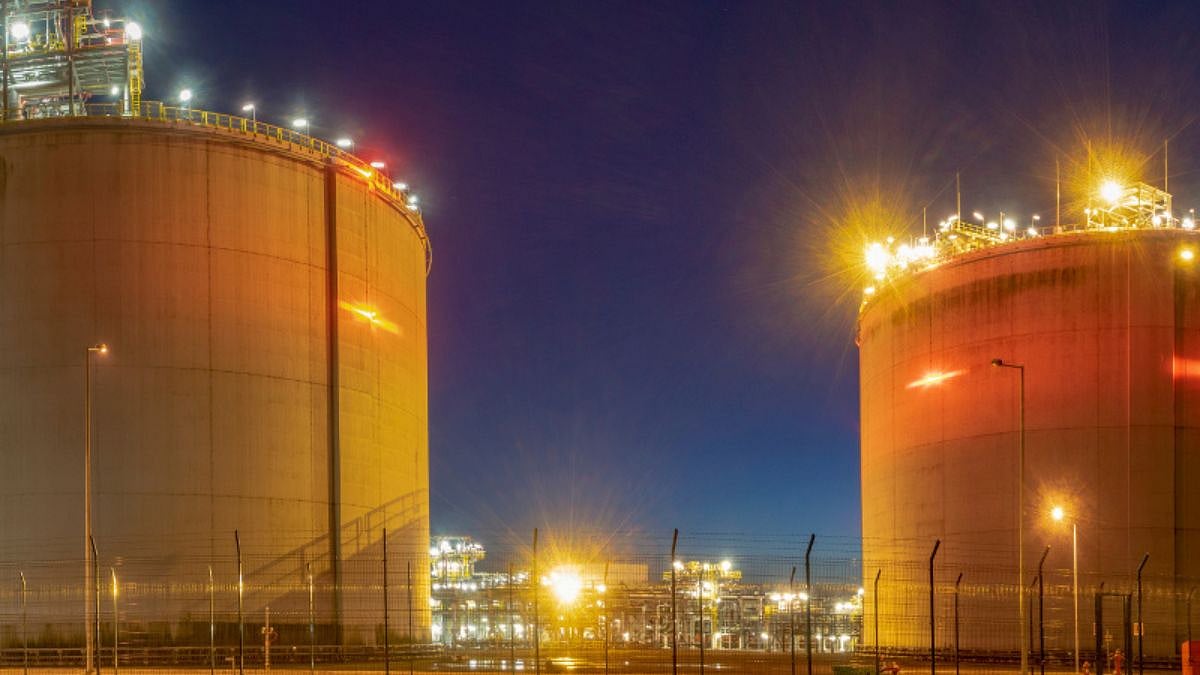New Delhi, Feb 11 (Ammar Zaidi) Petronet renewing a contract to buy 7.5 million tonnes of LNG from Qatar annually from 2029 for 20 years is the largest-ever extension of super-chilled fuel in the world, and will support India's clean energy goals, officials said.
The deal over three decades
The original 25-year deal was signed in 1999 and supplies started in 2004. Qatar has since then never defaulted on a single cargo and neither did it slap penalties under take-or-pay clause when the Indian firm did not take deliveries because prices were too high, top Petronet officials said.
Supplies under the extended contract would start after Petronet takes deliveries of 52 cargoes it had failed to take in 2015-16 when prices had shot up sharply.
While the volumes in contract have not changed, price changed four times, including the latest one when the contract extension was renegotiated.
The composition of the gas promised to be delivered has also changed. RasGas, which is now QatarEnergy, had originally signed to supply 'rich' or gas containing components of ethane and propane that is used as feedstock in petrochemical complexes.
It supplied 5 Million Tonnes (MT) a year of LNG that contained methane (used to produce electricity, make fertilisers, turned into CNG or used as cooking fuel), as well as ethane and propane on a firm basis and the rest on best endeavour basis.
The revised contract for 'Rich LNG'
In the revised contract agreed last week, where the price is also lower, QatarEnergy will supply 'lean' or gas stripped of ethane and propane. But Petronet officials said Qatar will continue to supply 'rich' gas as long as they dont have a facility to utilise ethane and propane.
"We will continue to receive 'rich' LNG," a top company official said.
State-owned Oil and Natural Gas Corporation (ONGC) spent Rs 30,000 crore on building a petrochemical complex at Dahej in Gujarat to use ethane and propane from LNG coming from Qatar, to make products that are used to manufacture plastics to detergents.
"They (ONGC) will continue to get those components," another official said.
In 1999, in response to a tender, RasGas had offered to sell LNG to Petronet LNG Ltd, a joint venture of state-owned oil firms, headed by the Secretary in the Oil Ministry, at USD 2.53 per million British thermal unit at a crude oil price of USD 20 per barrel.
The LNG price was to rise or fall by 2 cents per mmBtu in tandem with every dollar movement in oil price. At a USD 100 a barrel oil rate, the LNG price was to be USD 4.13 per mmBtu.
Sources said the second best offer in that tender was from Petronas of Malaysia that quoted the same fixed cost but a slightly higher linkage to oil and coal prices. In case of Petronas, LNG price would have risen or fallen 3 cents per mmBtu for every rise or fall in oil prices.
But strangely, an unsolicited offer from RasGas pricing LNG in a band of USD 16-24 per barrel oil price (USD 2.01 per mmBtu to USD 3.04 per mmBtu gas price) was accepted by Petronet in 2000.
The rate of ups and down
In 2003, Petronet renegotiated the price and agreed to have a fixed price at USD 20 per barrel of oil (USD 2.53 per mmBtu) for the first five years from 2004-2009 and indexation with actual crude prices thereafter.
Under the 1999 contract, RasGas began supplying the first tranche of 5 MT a year or 'rich' LNG at Dahej in Gujarat in 2004. But supply of the remaining 2.5 MT could not start as contraction of Kochi terminal in Kerala was delayed.
In 2005, Petronet entered into negotiations with RasGas to advance the tranche-2 volumes of 2.5 MT. They proposed to buy the entire 7.5 MT a year of contracted supplies at Dahej.
Petronet signed a revised deal in 2006 wherein it agreed to take 5 MT of rich gas and for the rest agreed to RasGas condition that the rich gas will be supplied only on best endeavour basis rather than as contractual commitment, sources said, adding that the best endeavour basis has now been extended to all of the 7.5 MT of LNG supplies.
After five years of fixed price, a new price kicked in from 2010. The rate was 12.67 per cent of the 12-month moving average of the basket of crude oil imported by Japan, called the Japanese Crude Cocktail, or JCC. This formula had a rolling ceiling and floor of 60-month average JCC, plus or minus USD 4.
While the international oil prices dropped to multi-year lows in 2015, this ceiling and floor meant that LNG cost to India would remain at highs of USD 12-13 per mmBtu even though gas in spot or current market was available at half the rate.
This floor and ceiling had benefitted India when rates remained at USD 8-9 despite crude oil shooting up to USD 147 a barrel and LNG rates touching USD 20 per mmBtu in previous years.
The high prices of 2015 led to renegotiation of the price. The formula was revised to 12.67 per cent of the three-month average price of Brent crude plus a fixed component of USD 0.52 per mmBtu.
Sources said the 20-year extension is only for 7.5 MT a year of original volume and the additional 1 MT will be dealt with separately.

The new contract
The new contract price is at about 12.2 per cent of Brent oil. The USD 0.52 per mmBtu of fixed cost has been scrapped and so has the responsibility on part of the Indian firm to ship the LNG.
Now QatarEnergy will ship the gas, an exercise that will cost it around USD 0.30 per mmBtu.
Petronet officials said the company had chartered-hired two ships, called 'Disha' and 'Rahi' from a consortium of Shipping Corporation of India (SCI) and Japanese firms K Line, NYK Line and Mitsui OSK Line. That contract was for 25 years and ends in 2028 after which ships will return to the consortium.
A third ship, 'Aseem' was hired in 2006 for ferrying additional volumes of LNG from Qatar. Petronet will lease out the ship after 2028, they said.
Since entering into a deal with Qatar, Indian firms have signed deals to import LNG from Australia, the US and Russia.
According to Wood Mackenzie, the sales and purchase agreement extension between QatarEnergy and Petronet covers a total volume of 150 MT over 20 years, surpassing the two 108 million tonnes deals signed by QatarEnergy with the China National Petroleum Corporation and Sinopec in the past two years.
"This agreement plays a crucial role in enabling India to reach its target of increasing the proportion of natural gas in its energy mix to 15 per cent by 2030, a significant rise from the current 6.3 per cent," said Daniel Toleman, Director, global LNG (Asia), at Wood Mackenzie.








